
Oct '15 - Feb '16
Second year in my english writing class my professor gave us a prompt on why we liked our choice of study. I remember writing “I like architecture because I like poetry”. I thought it was pretty odd thing for me to say because I had never really thought of it like that before. When others would ask me why I decided architecture I would just say it was always something I wanted to do without thinking much more of it. But that day I did have some realization, not of the relationship architecture has to poetry; I didn’t like the two of them because of their connection to each other. I liked, and came to love, architecture because of the ability, like poetry, to tell abstract and meaningful stories with means of representation that exist in ordinary forms. Poetry takes writing forms, sentence structure, word connotations (one of my personal favorites), and other devices and turns them into something beyond itself. In architecture we have three dimensional spaces and object and can use our abilities to represent abstract ideas and concepts in beautiful and meaningful ways.
This previous quarter I took a more theoretical studio that I had before with a great professor, Frank Clementi of RCH studios. The class was centered around the idea of monumentality, the prompt was to take a well known monument and implement a program in a way that would accentuate some aspect we wanted to exploit about what the monument represents. I chose the Arc De Triomphe because of the way it existed in my memory. The presence it presumed in the middle of that twelve street traffic circle. Upon further retrospection I discovered that presence that burned itself in my mind was accentuated through ideas of viewing and approaching objects. After that realization, I sought how to exploit that. A DMV would now occupy the Arc De Triomphe, encircled by an outdoor park space where visitors could queue.
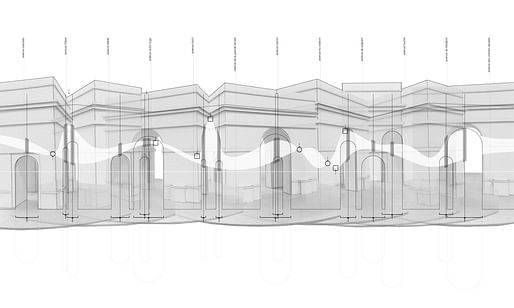
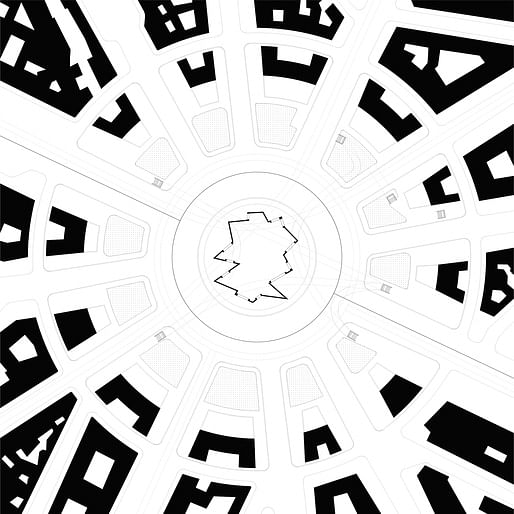
The Arch presented something unique in the realm of viewing because of the inability to maintain one viewpoint. The way it was originally meant to be approached, and passed through, can only be seen by car; if seen by which one will be diverted around the traffic circle. The pedestrian with the power to fully approach the monument is forced to do so through underground passage ways. That is where I found the window to exploit. I wanted the experience of going around an object and approaching an object to be melded together (the notion of a blurred building had come up between Frank and I during desk crits).
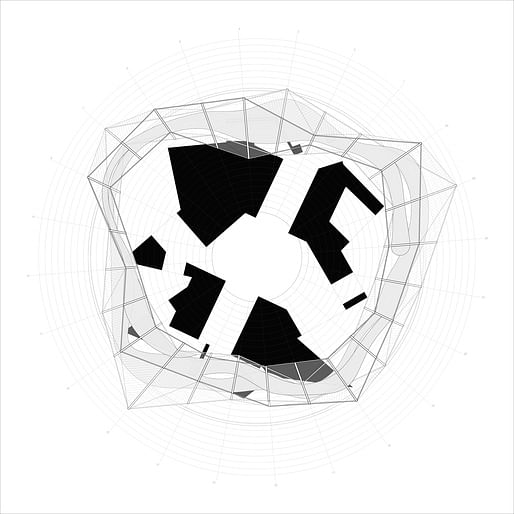
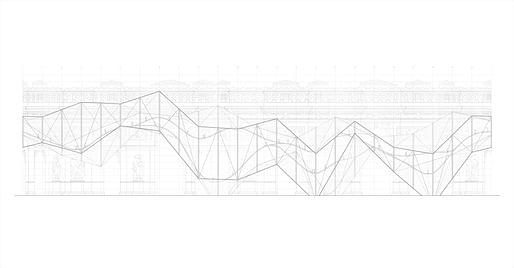 I discovered the blur through collage. I took the views going around the arch and stitched them back together then diagrammed the experience of perspective and distance into a graph on top of that. That is where I began to incorporate remapping to get experiences overlapped. I took the stitched panoramic and replaced it on the site to get a new form for the Arch, generated by its original form and completing the notion of going around a full circle at one instant. The diagram was translated back onto the site as well, once in plan view and once in elevation, that would become a new circulation. Using the elevation and plan to get coordinates I could construct the section views through graphing points. From the section views I could generate the three dimensionality of the prosthetic by treating each section as a frame.
I discovered the blur through collage. I took the views going around the arch and stitched them back together then diagrammed the experience of perspective and distance into a graph on top of that. That is where I began to incorporate remapping to get experiences overlapped. I took the stitched panoramic and replaced it on the site to get a new form for the Arch, generated by its original form and completing the notion of going around a full circle at one instant. The diagram was translated back onto the site as well, once in plan view and once in elevation, that would become a new circulation. Using the elevation and plan to get coordinates I could construct the section views through graphing points. From the section views I could generate the three dimensionality of the prosthetic by treating each section as a frame.





What I really enjoyed about the project was something I had unintentionally done, but logically was the only way it could have happened. I realized how bluntly I had translated from one to three dimensional representation. In elevation and plan each frame was represented by one dimension: a line, in section each frame was represented in two dimensions: drawings, then finally connected the sections together in a physical model to create the three dimensional architecture. Thinking of each frame as an instance then connecting them accentuated the notion of the blur on the building, because at the base level they are created in the same way.
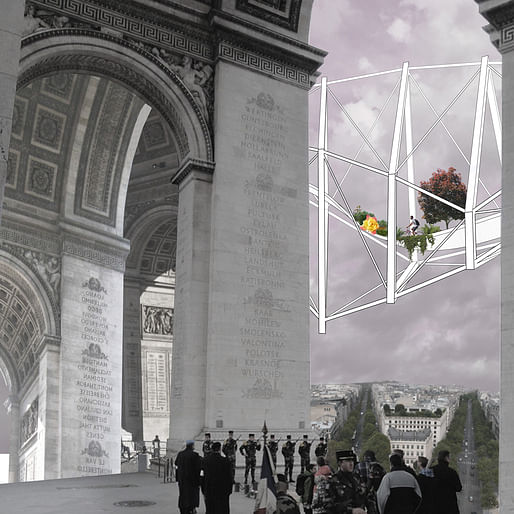
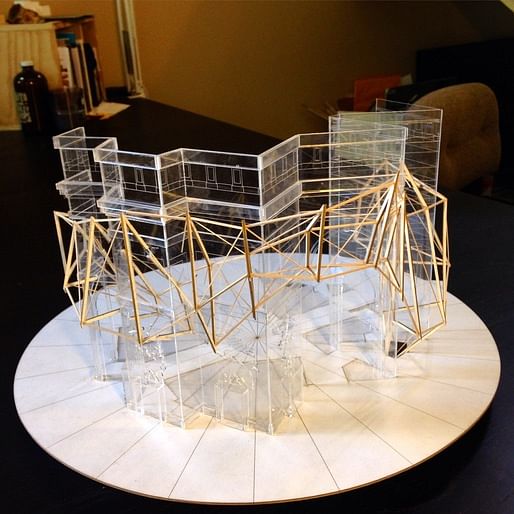

Five years ago when I entered the Architecture school I never thought of just how big my thinking could be in thinking about society. By no means am I calling myself an anthropologist or anything of that nature, but I am caught in the especially prevalent ideology of the architecture student.
No Comments
Block this user
Are you sure you want to block this user and hide all related comments throughout the site?
Archinect
This is your first comment on Archinect. Your comment will be visible once approved.